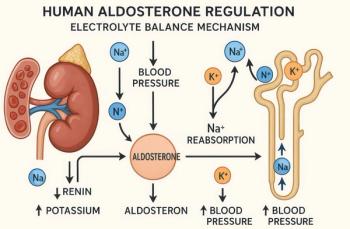
Cardiovascular Complications of T2DM: Drugs to Watch
Colesevelam helps reduce serum glucose levels and also lowers LDL-C in patients with type 2 diabetes. Bromocriptine reduces the relative risk of cardiovascular events in patients with type 2 diabetes.
A recent update from the American Academy of Clinical Endocrinology on the management of type 2 diabetes mellitus (T2DM)1 suggested therapies that I haven’t considered in the past. In addition to the usual armamentarium, 2 agents in particular that are recommended as add-ons in dual- or triple-drug regimens caught my attention: colesevelam and bromocriptine QR. Both appear to offer cardiovascular (CV) benefits that are essential for optimal management of T2DM.
Colesevelam (CM) is a second-generation bile acid sequestrant (remember its first-generation predecessor cholestyramine?) that lowers both glucose and lipid levels. A recent review2 summarized the drug’s significant efficacy in patients with T2DM. Six randomized controlled trials (a total of 1450 participants) that ranged in duration from 8 to 26 weeks were studied. CM was compared with and without other antidiabetic drug regimens, with placebo as well as with other active treatments. CM with add-on agents decreased fasting glucose levels by a mean of 15 mg/dL (95% CI, -22 to -8; P < .00001). A decrease in A1C with CM of 0.5% was also seen (95% CI, 0.6% to 0.4%; P < .00001). A mean decrease in LDL cholesterol of 13 mg/dL was achieved as well (P < .00001). Hypoglycemia was infrequent. No other adverse events were reported.
The authors offer summary points: CM has salutary effects on glucose control. The number of studies included is small, however, and the risk of bias in the studies reviewed was either unclear or high. Long-term data are not available as of yet and are needed to assess CM’s effects on management of CV risks and on reduction of T2DM-associated microvascular and macrovascular complications. Despite these limitations, CM holds promise not only because it helps control glucose but also because it lowers lipid levels and does not appear to have prohibitive adverse effects. Be on the lookout for many more studies evaluating longer-term benefits of CM.
Bromocriptine-QR (BMC) is a quick-release formulation of the dopamine D2 receptor agonist bromocriptine. A recent study targeting 3070 individuals with T2DM offers hope in the campaign to reduce CV complications.3 Patients were receiving stable doses of antihyperglycemic agents; most were receiving cardioprotective agents and two-thirds had macrovascular disease. Randomization for the study was 2:1 BMC versus placebo (for 52 weeks). The composite CV end point included myocardial infarction, stroke, unstable angina leading to hospitalization, heart failure, and/or coronary revascularization. There was an approximate 40% reduction in relative risk for those end points in patients randomized to BMC. The result was consistent regardless of age, duration of disease, race, sex, or preexisting CV disease.
The CV complications associated with T2DM are common and severe. Both these agents appear to impact more than 1 limb of the risk-factor tree. BMC will receive substantial attention in longer, larger trials, just as CM will. I suspect both agents will become more common as add-on therapies in patients with T2DM who have CV disease and who have not reached appropriate targets.
The limited data of today may become the evidence that guides treatment soon.
References
Garber AJ. (Task Force Chair). The American Association of Clinical Endocrinologists comprehensive diabetes management algorithm. Endocr Pract. 2013;19:327-336.
Ooi CP, Loke SC. Colesevelam for type 2 diabetes mellitus. Cochrane Database Syst Rev. 2012;12:CD009361. doi:10.1002/14651858.CD009361.pub2.
Gaziano JM, Cincotta AH, Vinik A, et al. Effect of bromocriptine-QR (a quick-release formulation of bromocriptine mesylate) on major cardiovascular events in type 2 diabetes subjects. J Am Heart Assoc. 2012;1:e002279. http://www.ncbi.nlm.nih.gov/pmc/articles/PMC3541616/
Newsletter
Enhance your clinical practice with the Patient Care newsletter, offering the latest evidence-based guidelines, diagnostic insights, and treatment strategies for primary care physicians.






























































































































































































































































































































